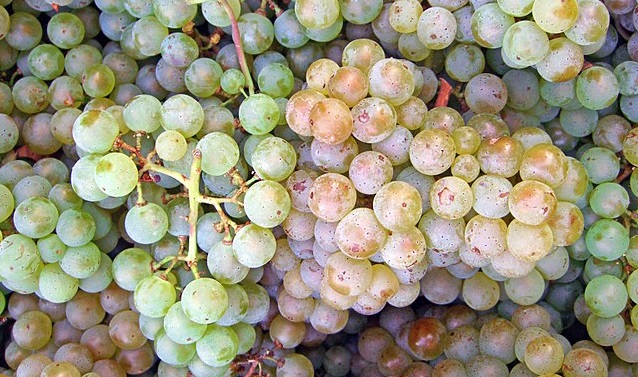World Famous Grapes
Weissburgunder

Weisburgunder is produced under different names in various European wine regions.
Pinot Blanc - France
Pinot Bianco - Italy
Weisburgunder - Germany/Austria
Weissburgunder Flavors
Citrus and Green Fruit flavors are typical for Pinot Bianco, with hints of Flowers, Nuts, and Minerals.
Lemon |
Lime |
Apple |
Pear |
Flowers |
Almonds |
Hazelnuts |
Minerals |
Pinot Blanc (France - Alsace)
Pinot Blanc from Alsace, is known to be much like Chardonnay as a full body wine with good acidity.
Alsacian Pinot Blanc can show a range of flavors from apple to peach, along with nutty almond and spices depending on oak treatment.
Popular food pairings in Alsace are Omelet and Quiche.
Pinot Bianco (Italy - Alto Adige)
Italian Pinot Bianco is crisper, lighter and dryer than French Pinot Blanc.
Typical flavors are: Citrus. Apple. Pear. Floral Hints.
In Italy Pinot Bianco is often blended with other grapes and used in the production of sparkling wines.
Typical food pairings in Italy are Fish and Antipasti.
Weissburgunder (Germany / Austria)
German Weissburgunder (White Burgundy) is usually light and crisp, much like the Italian variety.
In Austria Weissburgunder is also used to make the luxurious and sweet Trockenbeerenauslese.